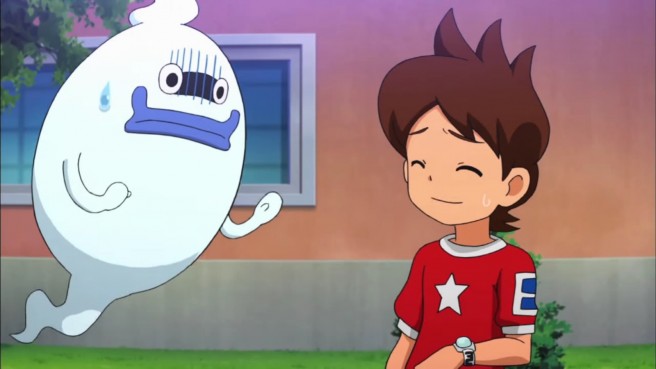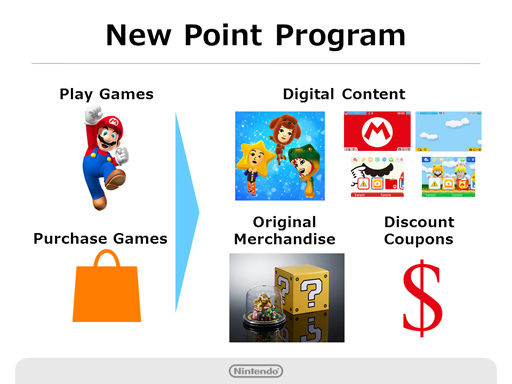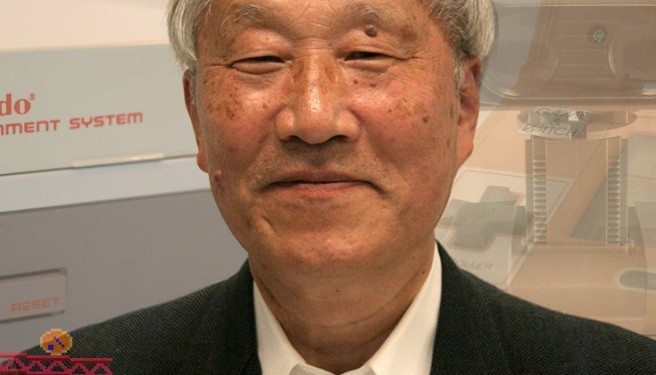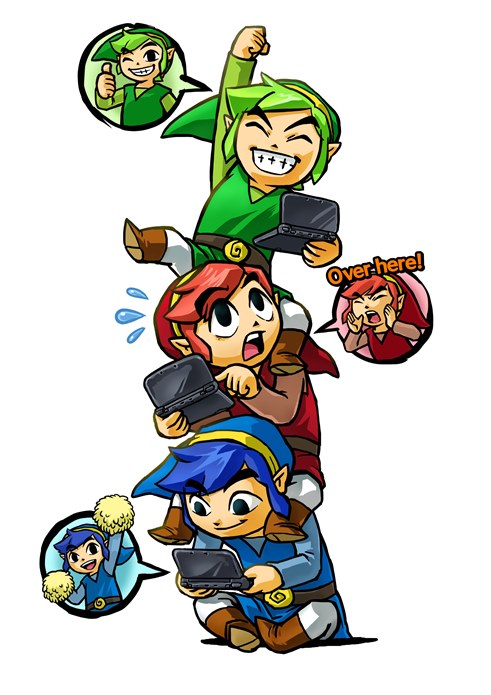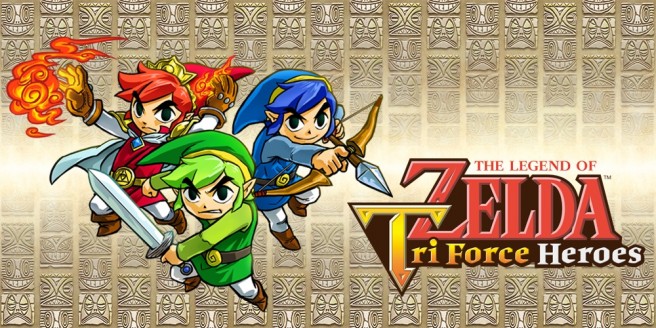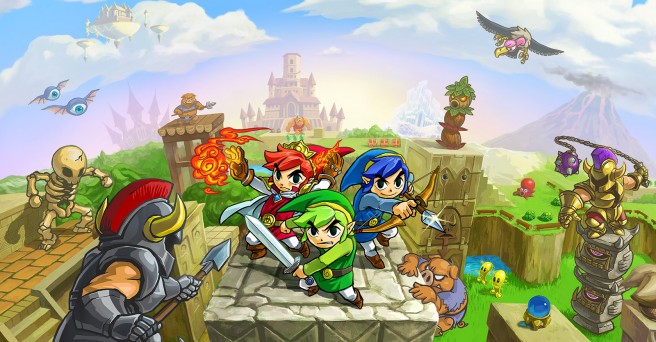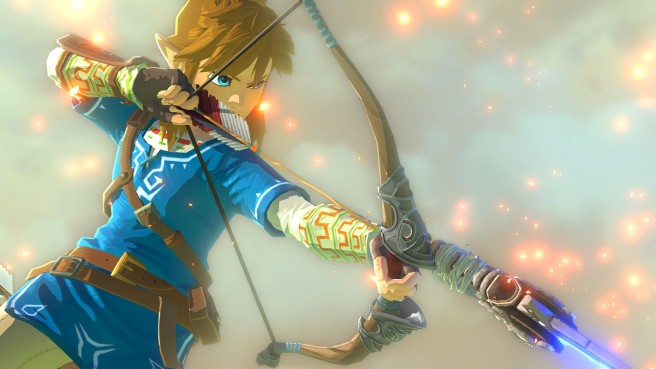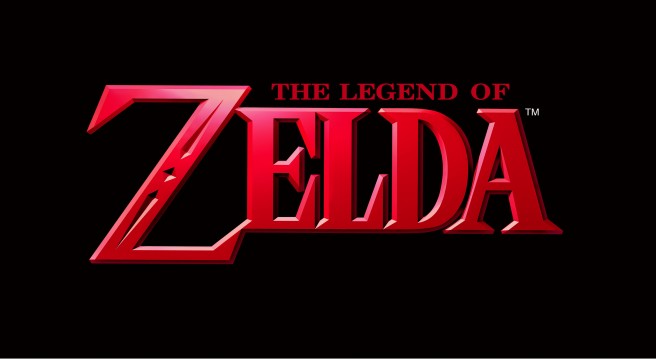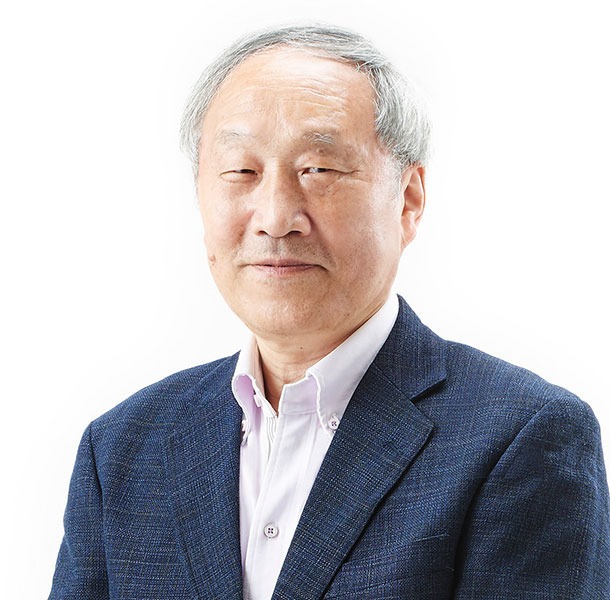VIZ Media thinks Yo-kai Watch will be the next Pokemon
Posted on 9 years ago by Brian(@NE_Brian) in General Nintendo, News | 31 Comments
VIZ Media has high hopes for Yo-kai Watch. Waell Oueslati, EMEA associate brand manager at Viz Media, recently told MCV that he believes the franchise could be the next Pokemon.
Oueslati said:
“This will be the next big boys’ brand, essentially the next Pokémon. We have very high expectations for the market and for the UK. We are certainly bigger than Pokémon in Japan; we currently have 95 per cent market share in that region.”
In case you’re curious, VIZ Media is in charge of Yo-kai Watch’s comics and TV show in both North America and Europe.
More: interview, Level-5, Viz Media, Waell Oueslati, Yo-kai Watch
Kimishima – wants 100-200 million My Nintendo members, Miitomo talk, NX offers new experience
Posted on 9 years ago by Brian(@NE_Brian) in General Nintendo, Mobile, News, Switch | 32 Comments
More tidbits have been translated from Nikkei’s interview with Nintendo president and CEO Tatsumi Kimishima.
We already heard Kimishima’s mention that Nintendo has interest in bringing its mobile apps to over 100 countries (with eight supported languages). We also heard him mention that he believes Nintendo could exceed profits from the Wii and DS days.
In terms of what’s new, here’s what Kimishima said when asked when the localization of Nintendo’s mobile apps will take place:
“I want to do it as soon as possible. This is because our goal is to increase the number of My Nintendo members. It would be good if we reached one hundred or two hundred million members.”
Kimishima was also asked if Nintendo will lose money on Miitomo. He replied with the following:
“If you want to dress your Mii in certain outfits, it’ll be so that you can select and purchase them. Also, it will have game elements.”
Finally, Kimishima did briefly touch on NX. Of course, Nintendo won’t be talking about it until next year, but it “offers a totally new experience.” He also wants it to be adopted quicker than the 3DS and the Wii U.
More: interview, Tatsumi Kimishima, top
NES designer talks about the controller
Posted on 9 years ago by Brian(@NE_Brian) in General Nintendo, News | 2 Comments
NES designer Masayuki Uemura has offered quite a bit of insight into the console’s controller. Here’s what was shared with USgamer:
“There were, as you can probably imagine, a lot of difficulties we faced in doing things for the first time in building this hardware, but one of the most difficult was, ‘What shape and layout will the controller have?’ This has a touch of coincidence about it, too, but some of those people who had gone to work with Gunpei Yokoi’s team eventually found their way back to our team. So one of the ideas that came up because of that was, ‘Well, we’ve got this Game & Watch multi-screen Donkey Kong that uses the controller format of a plus control pad and buttons.’ So we hooked that up and got it working.”
“At the time, we were prototyping various ideas for the Famicom hardware, as well as controllers. When we took this idea that had been used for controls with the Donkey Kong Game & Watch and got it working on the Famicom prototype with that same style of controls, we immediately knew, ‘OK, this feels right; there’s something good about this.’ That means that there are actually a few people who can claim that they invented the controller for the Famicom!
“I think that the biggest reason that we liked the controls this way was just how good the original Game & Watch Donkey Kong, which was on multi-screen, felt. To expand on that a little further, with this prototype… the multi-screen format of the Donkey Kong Game & Watch means that you have a screen on top and a screen on the bottom, with the controls down below. When we hooked up the prototype, it meant that you were no longer looking down there [at the controls], but up here [at the screen]. Yet we suddenly realized, kind of mysteriously, that you didn’t need to look at the controls while you were playing the game, and it still felt right!
“And up to that point, we had tried a big variety of control styles and they had all had some sort of something that didn’t feel quite right about them, but this was something that no matter who tried it on our team, they could tell right away that this worked. So that’s when I decided to put my foot down and make the call that this is what we would be going with.
“I may have made the decision, but in the end, it’s something that whoever worked on the Game & Watch for Donkey Kong had a hand in, whoever brought the idea to try out the prototype had a hand in it—it was really a team effort.”
“You know, we didn’t patent that technology (crosspad design) at the time. Once it was established, you kind of started to see it pop up everywhere, and now it’s kind of become a standard for controls in games.”
USgamer has much more with Uemura in its piece. You can read up on the full article here.
More: interview, Masayuki Uemura, top
SEGA – been tough translating Sonic into 3D, new games will be inspired by classic entries
Posted on 9 years ago by Brian(@NE_Brian) in General Nintendo, News | 80 Comments
SEGA has taken some heat with the Sonic series as of late. In particular, Sonic Boom admittedly led the gaming franchise astray and resulted in a large amount of criticism.
Speaking with Marketing Week, SEGA Europe marketing director Jon Rooke promised that new games in the series “will be more inspired by how it played in its heyday.” He also acknowledged the difficulty in bringing Sonic into 3D.
Rooke said:
“Sega has publicly apologised to the fans as the quality of console games in the Sonic franchise hasn’t been acceptable over recent years. It’s been tough translating that iconic side scrolling 2D experience from the 90s into 3D but Sonic is still huge for us so the new games will be more inspired by how it played in its heyday.”
Sonic Generations actually felt like a step in the right direction to me. And Sonic Colors, while not perfect, definitely had some redeeming qualities. It kind of makes you wish SEGA could be more consistent with the franchise!
Zelda: Tri Force Heroes – more talk of experimenting with 4 players, cut 2-player idea, totem inspiration
Posted on 9 years ago by Brian(@NE_Brian) in 3DS, News | 1 Comment
The Legend of Zelda: Tri Force Heroes features three players rather than four. We’ve heard from the development team a few times now that they did experiment with the latter number, but three Links was ultimately the path that was chosen.
Zelda: Tri Force Heroes director Hiromasa Shikata commented on this once again in an interview with IGN, in which he stated:
“When we tried four player, we definitely wanted to incorporate the totem mechanic, but what happened is that when you totem, the middle two players have nothing to do.”
“When it was four players, the players split up into two and two and each of them would do their own thing. So we thought that three players was the best number to have.”
Shikata also touched on a multiplayer idea that didn’t make it into the final game. Had it been implemented, two players could fuse together.
“[The fused heroes] could only go in one direction if both players wanted to go in that direction. Unfortunately, that made the gameplay very hard, so we had to take that mechanic out.”
Finally, Shikata discussed where the inspiration from the totem mechanic originated from.
“One of my teammates brought a picture of a circus act where people were stacked on top of each other. Looking at that picture, I thought that was a good way to use the 3D feature on the 3DS.”
Tri Force Heroes devs – communication origins, cut item ideas, amiibo in future Zeldas, more
Posted on 9 years ago by Brian(@NE_Brian) in 3DS, General Nintendo, News | 3 Comments
GameSpot has posted an interview with Zelda series producer Eiji Aonuma and Tri Force Heroes director Hiromasa Shikata. Between the two, they commented on the inspiration behind the game’s communication features, item ideas that were scrapped, consideration for two-player support, interest in using amiibo in future Zelda games, and more.
We’ve rounded up the various comments below. You can also read up on a few extra comments from GameSpot here.
Zelda: Tri Force Heroes director reveals a cut costume idea
Posted on 9 years ago by Brian(@NE_Brian) in 3DS, News | 2 Comments
The Legend of Zelda: Tri Force Heroes offers over 30 costumes. Yet there’s one idea that was left on the cutting room floor.
Speaking with USGamer, director Hiromasa Shikata revealed one costume that didn’t make it into the final game. There was talk about adding in “The Emperor’s New Clothes”, but the team couldn’t really think of a proper way to implement it.
According to Shikata:
“I can think of one right off the top of my head. That would be one that was inspired by the folktale “The Emperor’s New Clothes,†which as you know is the story of the emperor who thinks he’s wearing something of the highest fashion, but he’s actually—when other people look at him, he’s not wearing anything. They thought that would be a great idea for an outfit, but they weren’t able to come up with an implementation that would—they weren’t sure how to wrap up that whole thing as one good feature spec, you know, “How could we actually implement that neat idea as something that’s relevant to the game?†They unfortunately weren’t able to come to a conclusion, so that never made the cut.”
Aonuma planning a surprise twist for Zelda Wii U’s open world
Posted on 9 years ago by Brian(@NE_Brian) in News, Wii U | 59 Comments
Zelda producer Eiji Aonuma has commented a bit more on the new entry in the series for Wii U.
Speaking with IGN, he commented about the game’s open world. Aonuma acknowledged that some fans were hoping that Skyward Sword had a bigger open world, and for this title, he wants to “put a surprise, or kind of a twist, on my view of an open world game.”
He said:
“We actually had some feedback from Skyward Sword, where people were saying, ‘This is not exactly the Zelda game I was looking for, I was looking for a bigger open world.’ Unfortunately, I can’t go into details but I’m hoping to put a surprise, or kind of a twist, on my view of an open world game. I hope that you’ll look forward to it.”
Aonuma also talked about fan feedback. Though the development team reads a lot of what fans think about the series, not all of their feedback will make it into future Zelda titles.
“If we put all the feedback the fans write directly into the game, there won’t be an element of surprise. If there’s a comment and they’re asking for certain element, I would think, ‘Oh, why not interpret this in a different way that you wouldn’t expect?’ That’s how we create a new element in a Zelda game. I always want to implement something new and surprising into every game.“
More: Eiji Aonuma, interview, top, Zelda Wii U
Aonuma on Zelda’s 30th anniversary, team is doing its best with Zelda Wii U
Posted on 9 years ago by Brian(@NE_Brian) in General Nintendo, News, Wii U | 85 Comments
This week, Famitsu has another feature on The Legend of Zelda: Tri Force Heroes. Along with a general article about the game, there’s also a small interview with some of the game’s developers, including series producer Eiji Aonuma. Although most of the discussion naturally focused on Tri Force Heroes, Famitsu did ask a couple of other questions about the franchise.
Next year will be the 30th anniversary of The Legend of Zelda. When Famitsu mentioned this, Aonuma told the magazine:
“This year we wanted a Majora’s Mask concert, so it is not impossible that there may be a 30th anniversary concert next year. However, as we are trying to complete the new Zelda as fast as possible, that is all that is on our minds. That being said, we hope something will take form for the 30th anniversary. It is especially important to a producer of the series, so I hope to give something everyone can look forward to next year.”
NES designer on the system’s name, setting itself apart from Atari, and success
Posted on 9 years ago by Brian(@NE_Brian) in General Nintendo, News | 4 Comments
Mashable recently had a chance to speak with Masayuki Uemura, the lead designer of the Nintendo Entertainment System.
At one point during the discussion, Uemura commented on how the name was settled on:
“We decided to put Entertainment in the middle. We thought we could maybe piggyback a little bit [on] the naming idea Atari had had, but put something with a little more dynamism and attraction in the middle. So that’s how it became the NES.”
Masayuki went on to discuss Atari – which had created a negative images of games – and how Nintendo wanted to go in a different direction.
